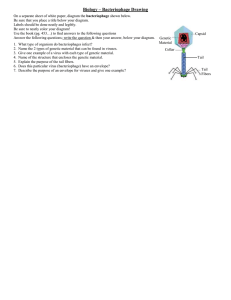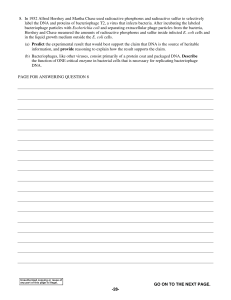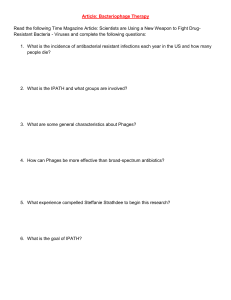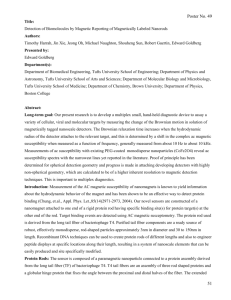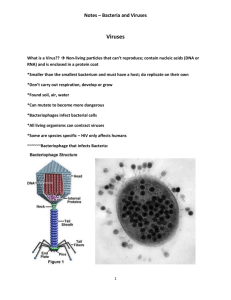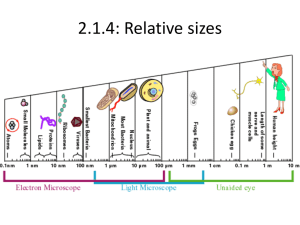Bacteriophage Fact Sheet
advertisement
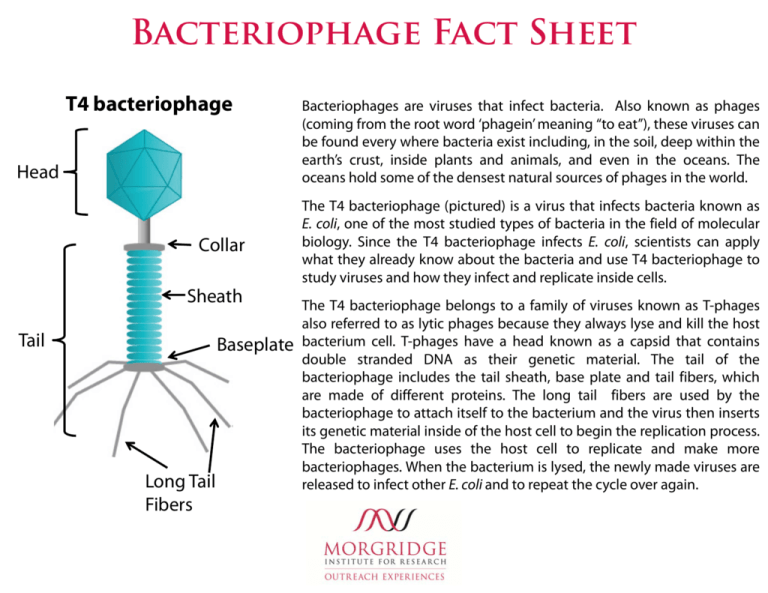
Bacteriophage Fact Sheet T4 bacteriophage Head Collar Sheath Tail Baseplate Long Tail Fibers Bacteriophages are viruses that infect bacteria. Also known as phages (coming from the root word ‘phagein’ meaning “to eat”), these viruses can be found every where bacteria exist including, in the soil, deep within the earth’s crust, inside plants and animals, and even in the oceans. The oceans hold some of the densest natural sources of phages in the world. The T4 bacteriophage (pictured) is a virus that infects bacteria known as E. coli, one of the most studied types of bacteria in the field of molecular biology. Since the T4 bacteriophage infects E. coli, scientists can apply what they already know about the bacteria and use T4 bacteriophage to study viruses and how they infect and replicate inside cells. The T4 bacteriophage belongs to a family of viruses known as T-phages also referred to as lytic phages because they always lyse and kill the host bacterium cell. T-phages have a head known as a capsid that contains double stranded DNA as their genetic material. The tail of the bacteriophage includes the tail sheath, base plate and tail fibers, which are made of different proteins. The long tail fibers are used by the bacteriophage to attach itself to the bacterium and the virus then inserts its genetic material inside of the host cell to begin the replication process. The bacteriophage uses the host cell to replicate and make more bacteriophages. When the bacterium is lysed, the newly made viruses are released to infect other E. coli and to repeat the cycle over again.
